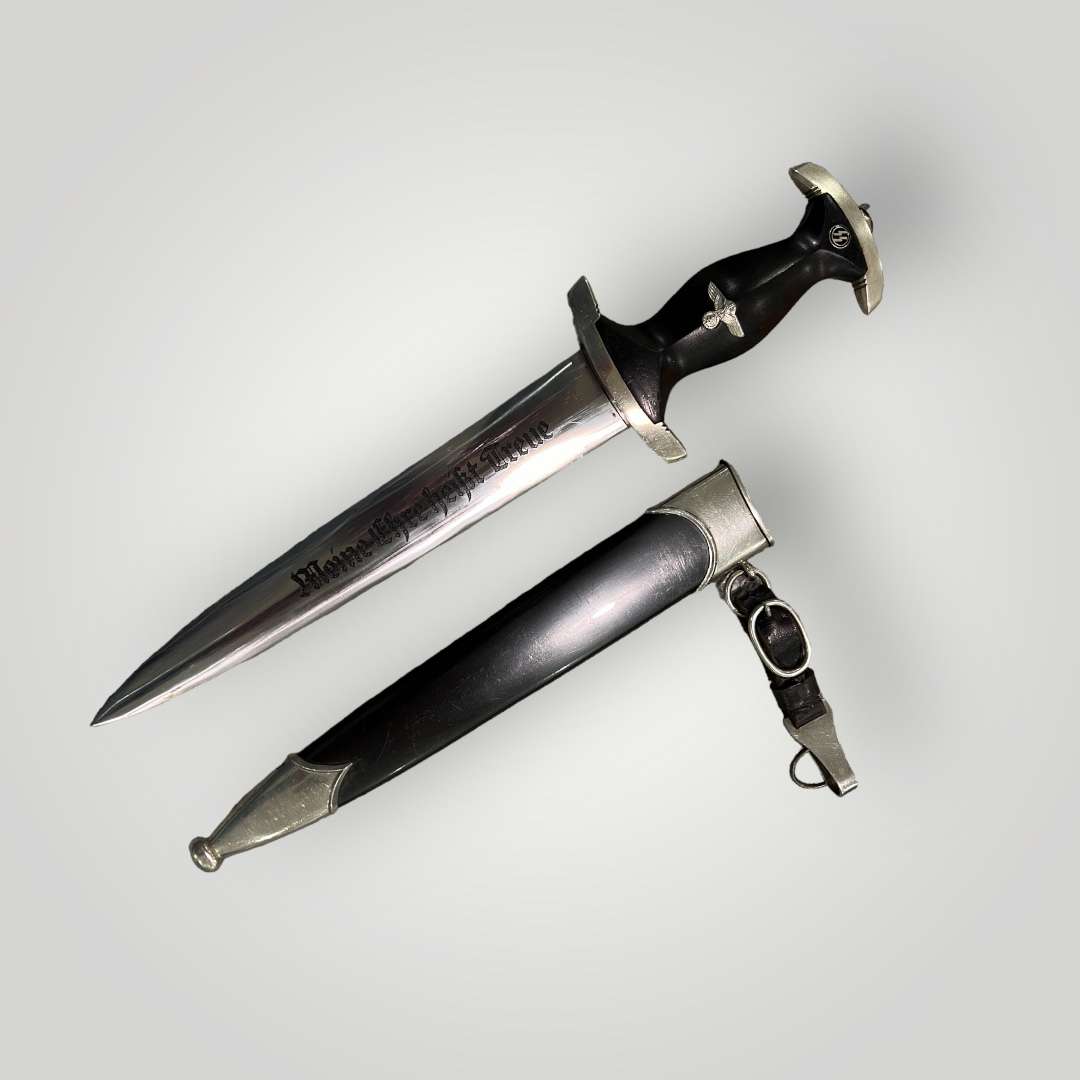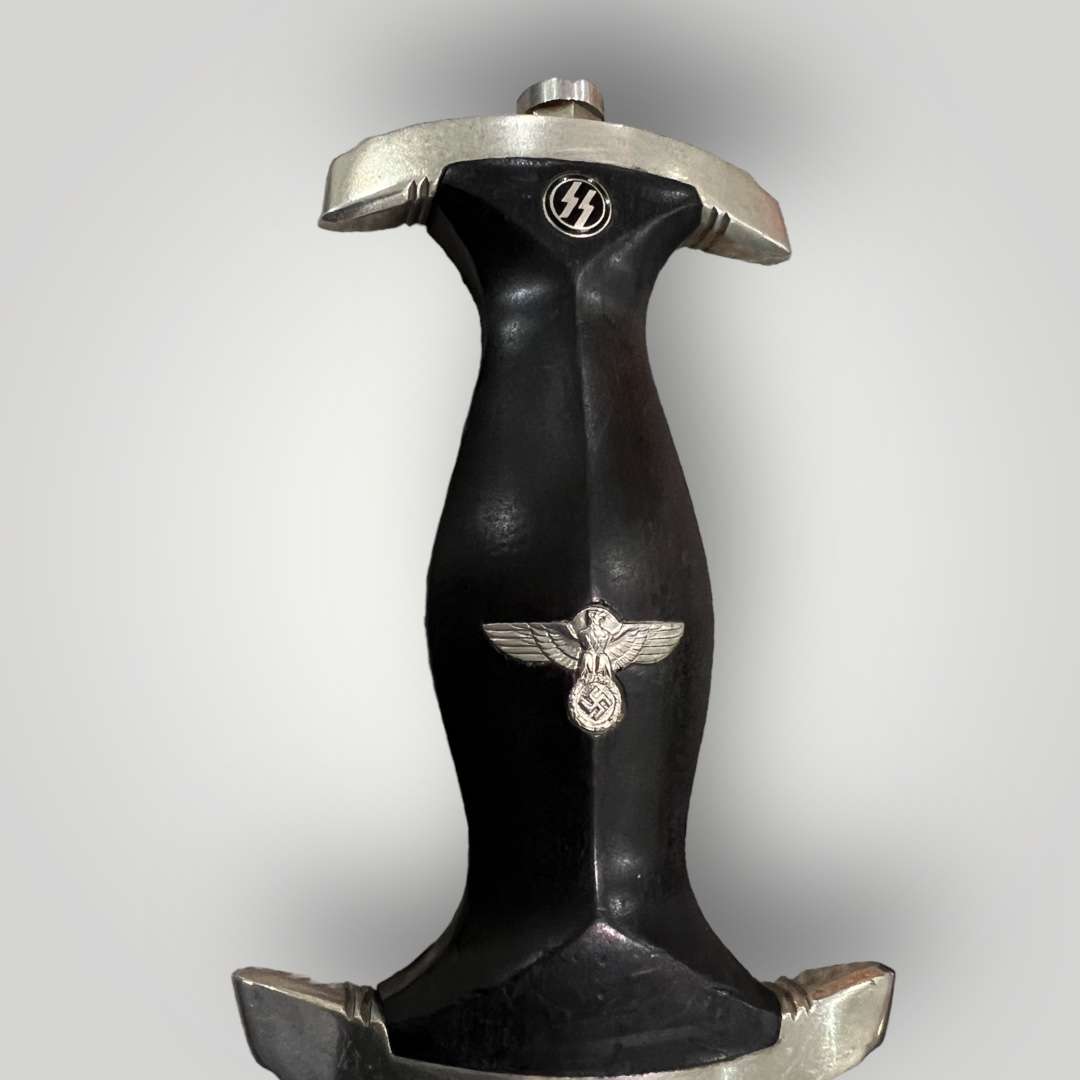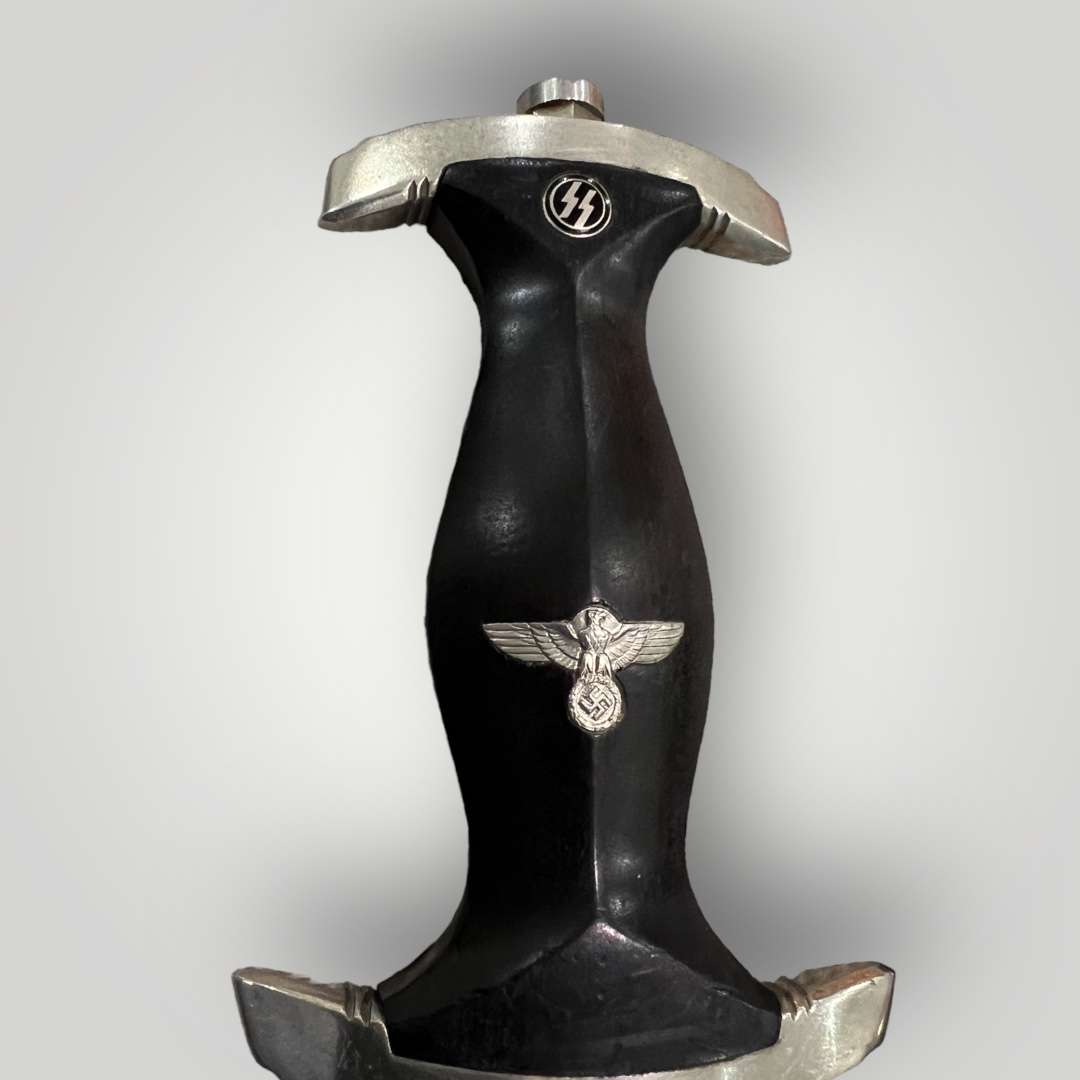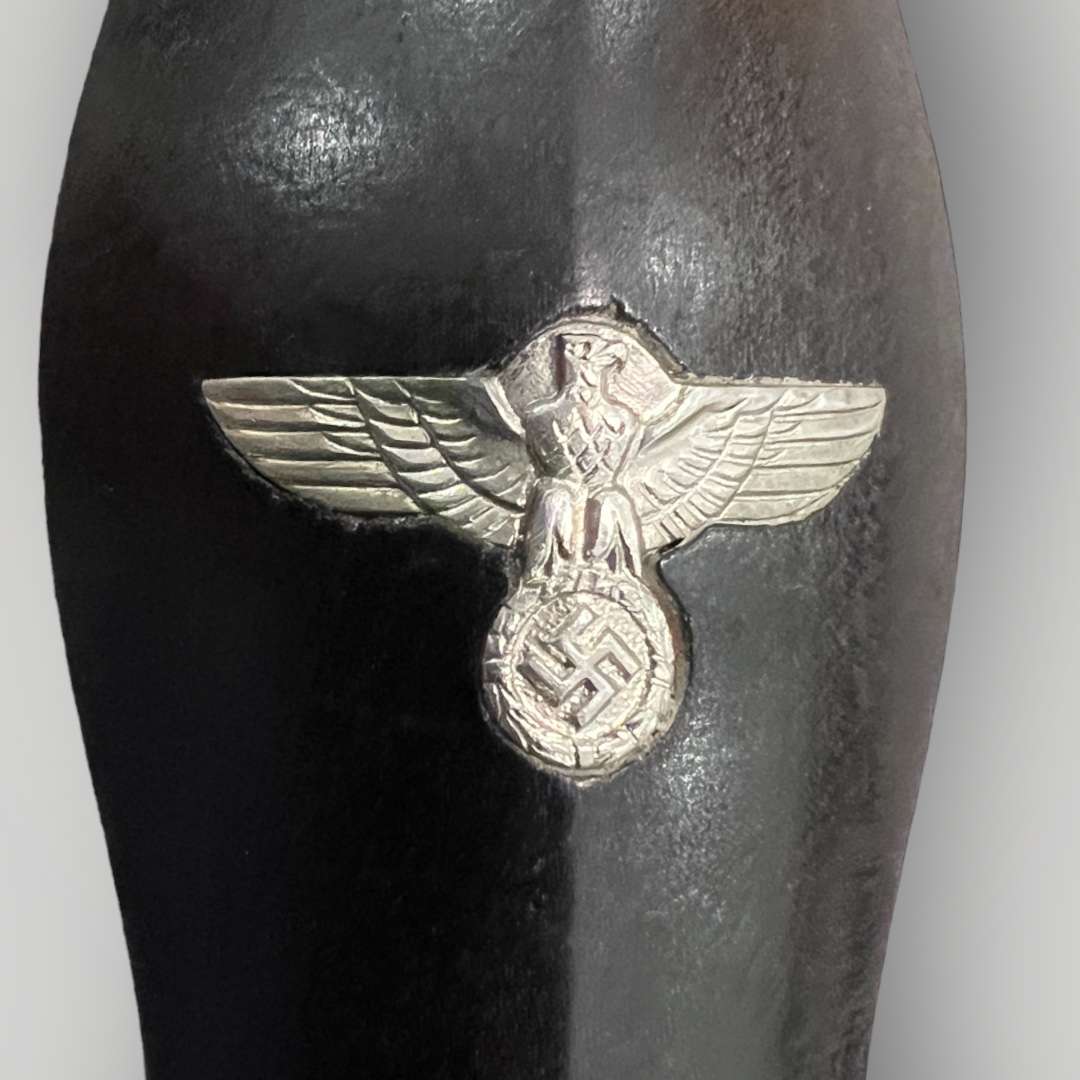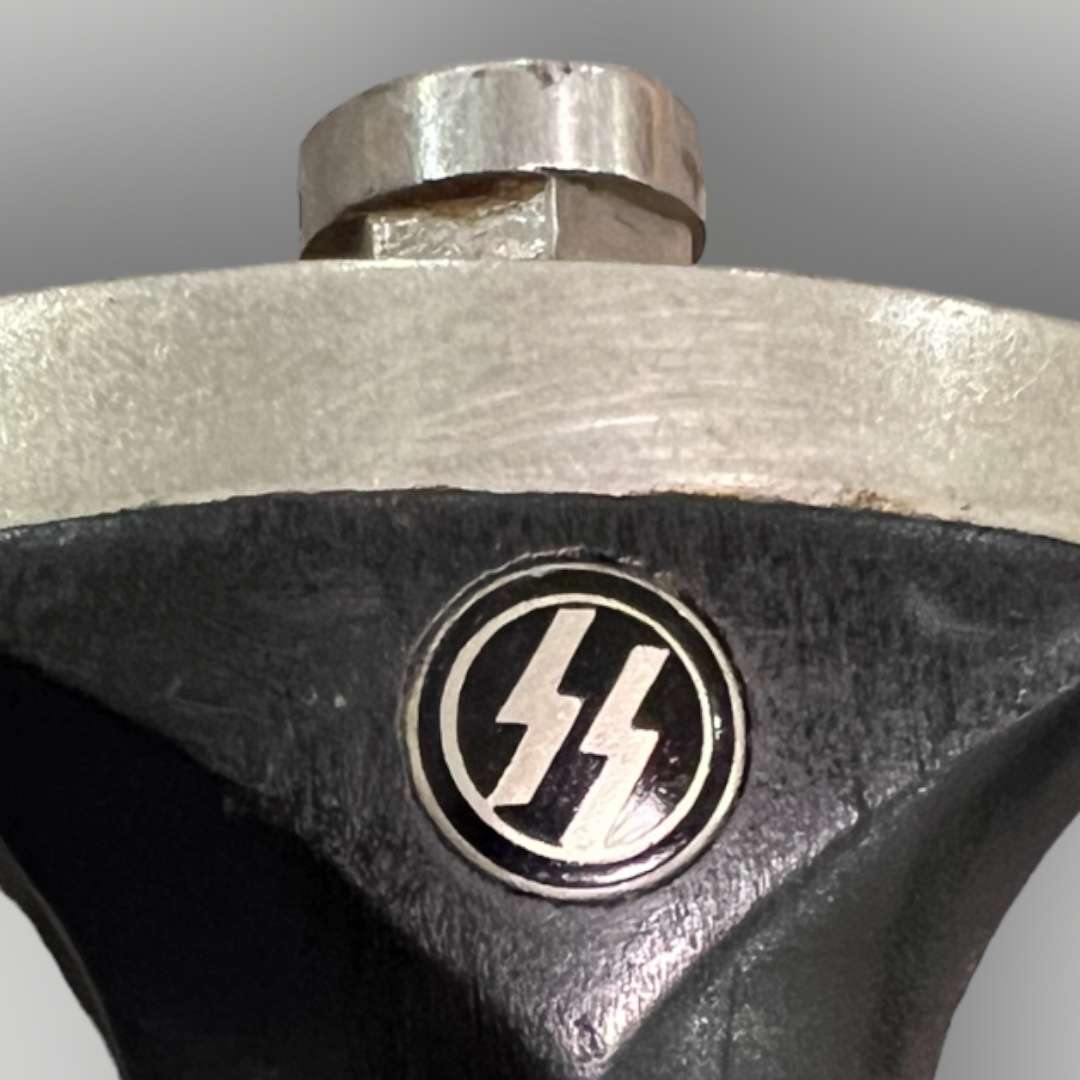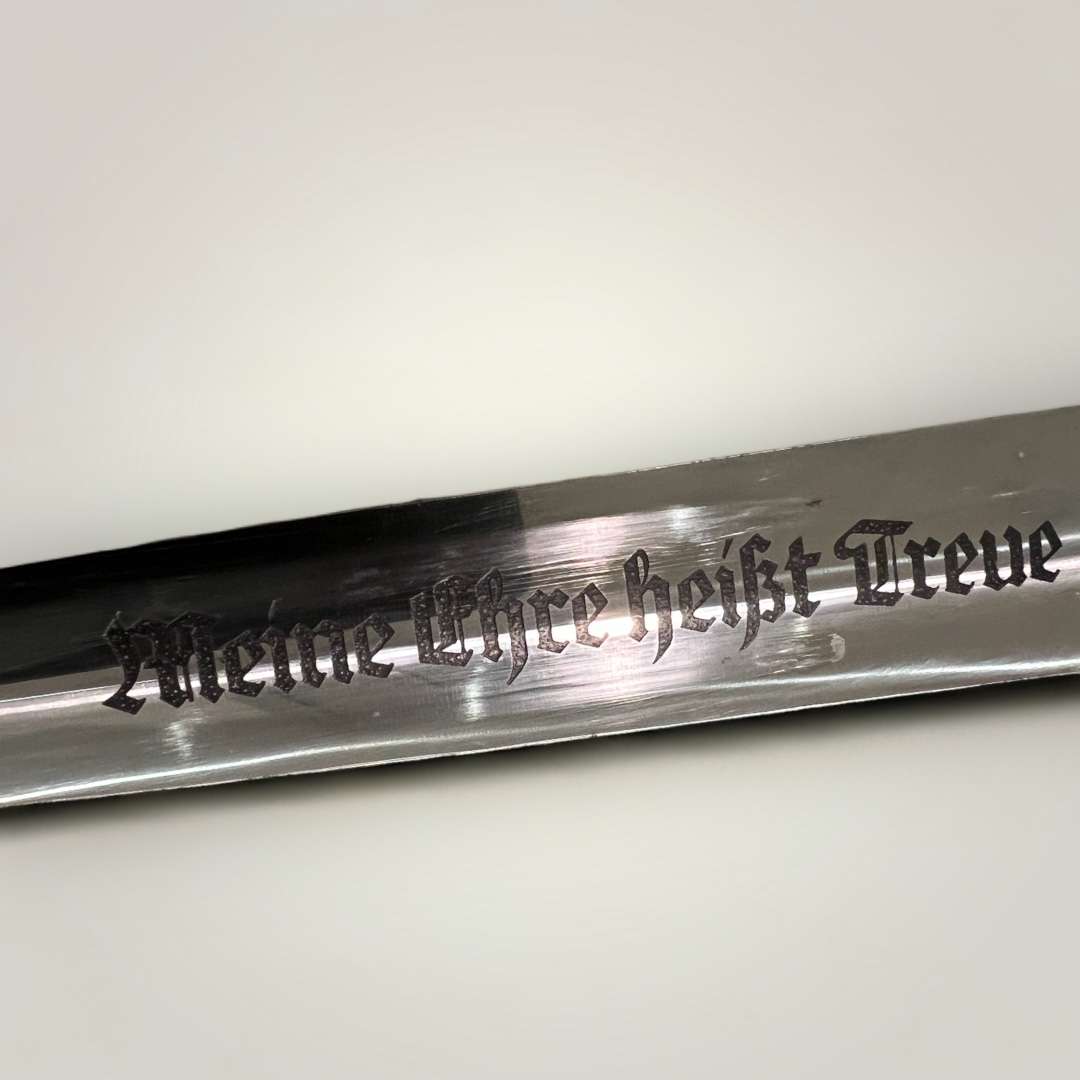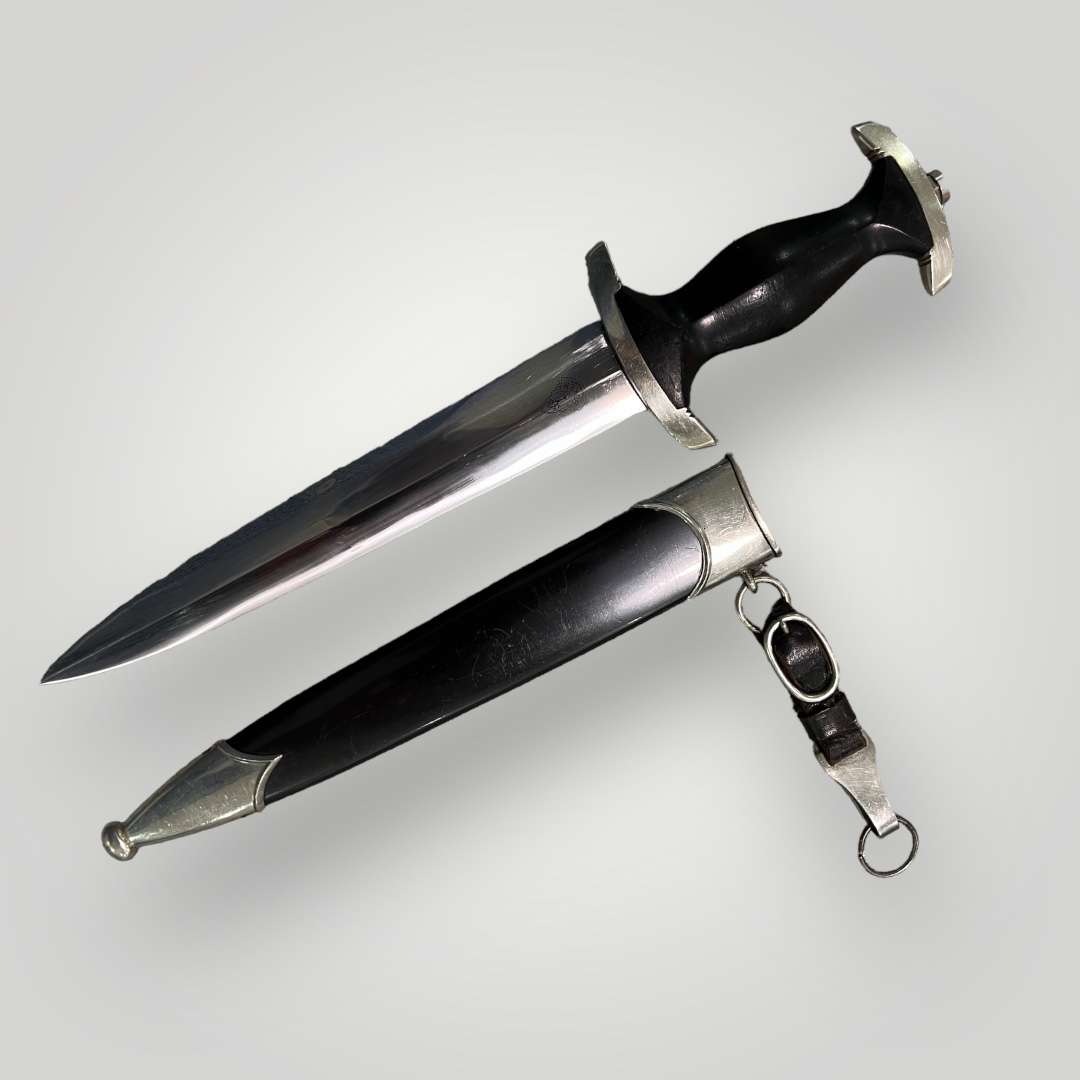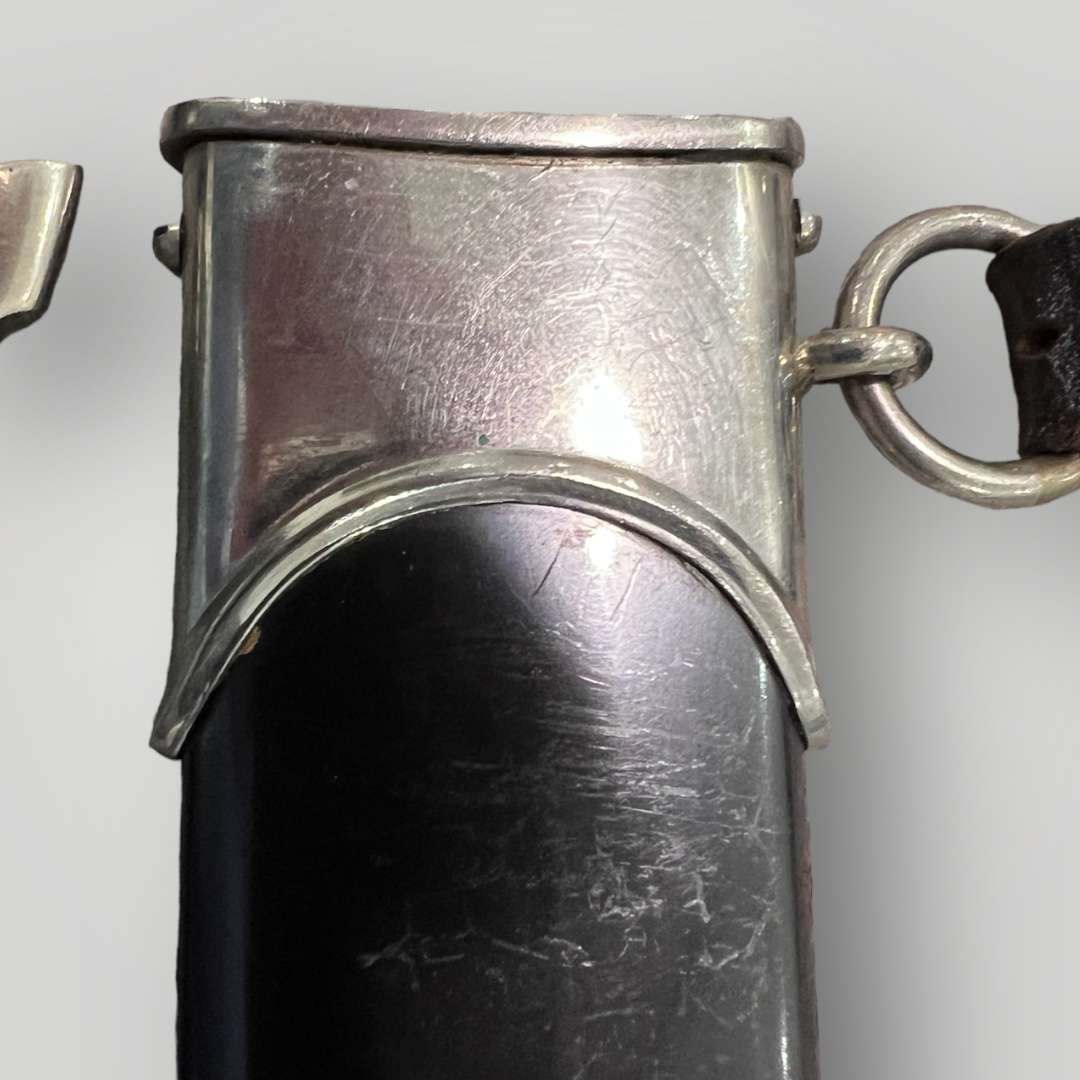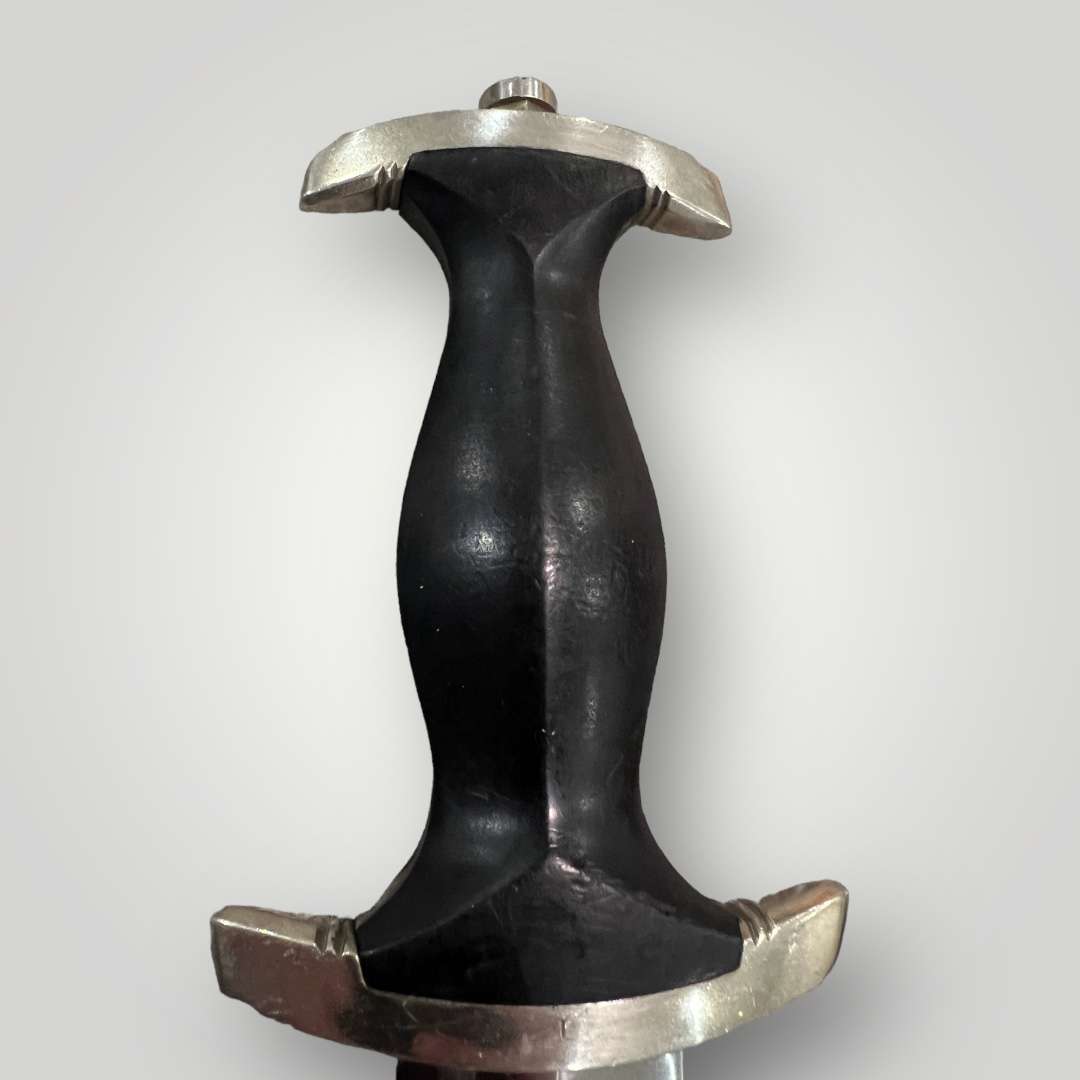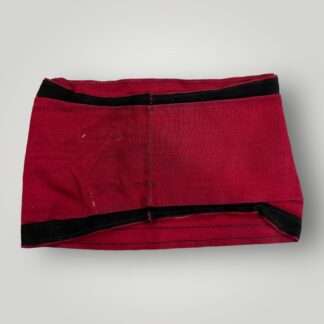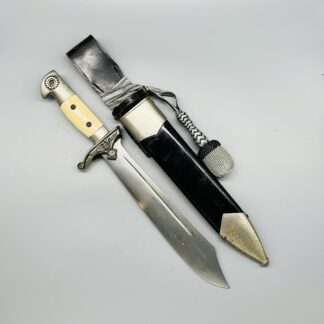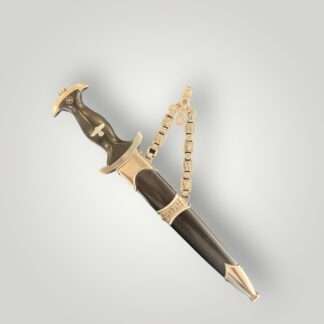Description
SS M33 Dagger
The inaugural dagger crafted for the SS was the Model 1933 (M33) SS dagger, tracing its design roots back to the 16th-century Swiss hunting dagger known as the “Holbein.” Worn by all ranks within the SS, the M33 SS Dagger held significant symbolism within the Third Reich, where SS membership was highly esteemed. On November 9th each year, new SS recruits pledged their unwavering allegiance to the Führer (Adolf Hitler) before the Feldherrnhalle monument in Munich, receiving the dagger as a tangible representation of their oath. The blade bore the inscription “Mein Ehre Heißt Treue,” translating to “My Honor is Loyalty,” serving as the SS motto.
Production of these daggers commenced in late 1933 and persisted until 1942, concluding due to the prioritization of resources and labor for the war effort. Collectors now categorize these artifacts into three main groups: Early, Transitional, and Late periods. Early SS daggers, crafted from 1933 to early 1935, feature anodized scabbards, nickel fittings, and exhibit superior workmanship. The Transitional period, spanning from 1935 to 1938, is characterised by daggers with painted scabbards, plated fittings, and RZM codes accompanied by the maker’s logo on the blade. Late period daggers, produced from 1938 to 1942, share similarities with transitional ones but exclusively bear the RZM logo and code on the blade, maintaining plated fittings and painted scabbards.



